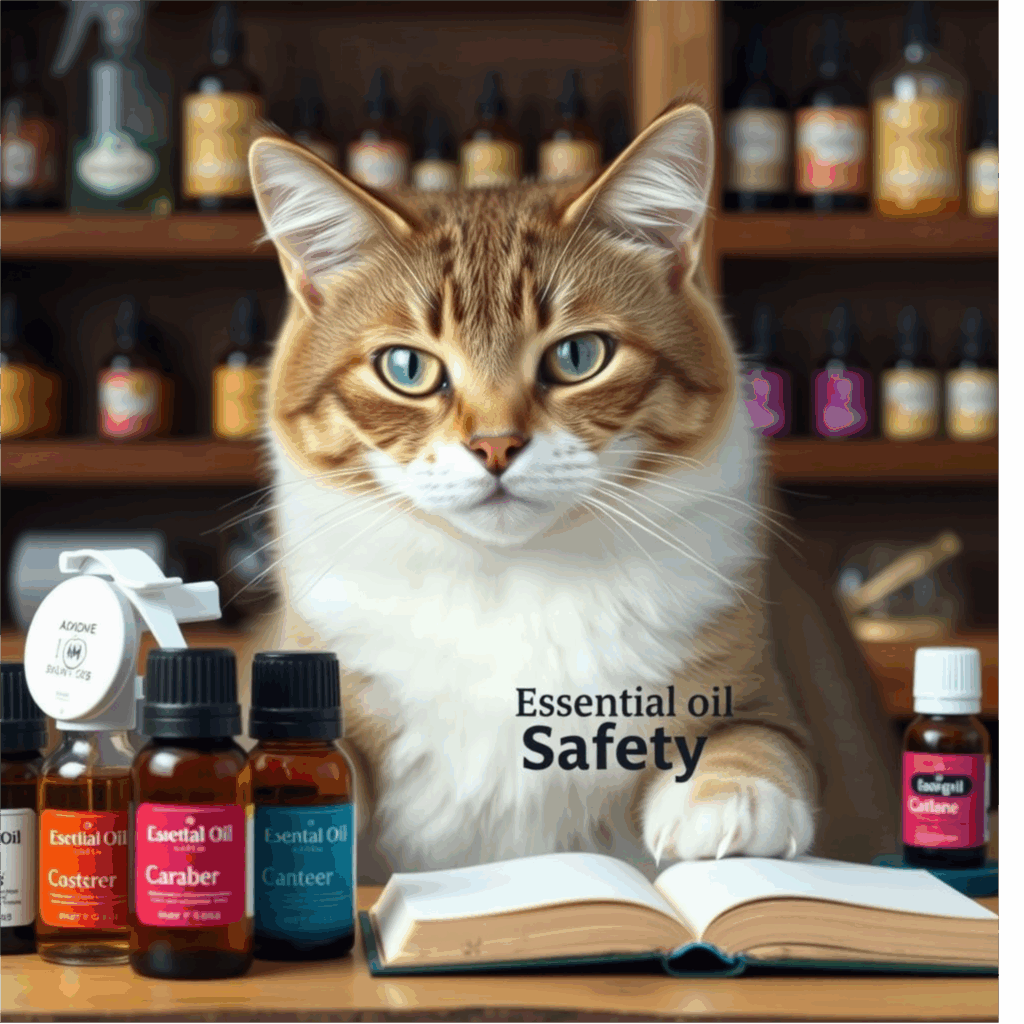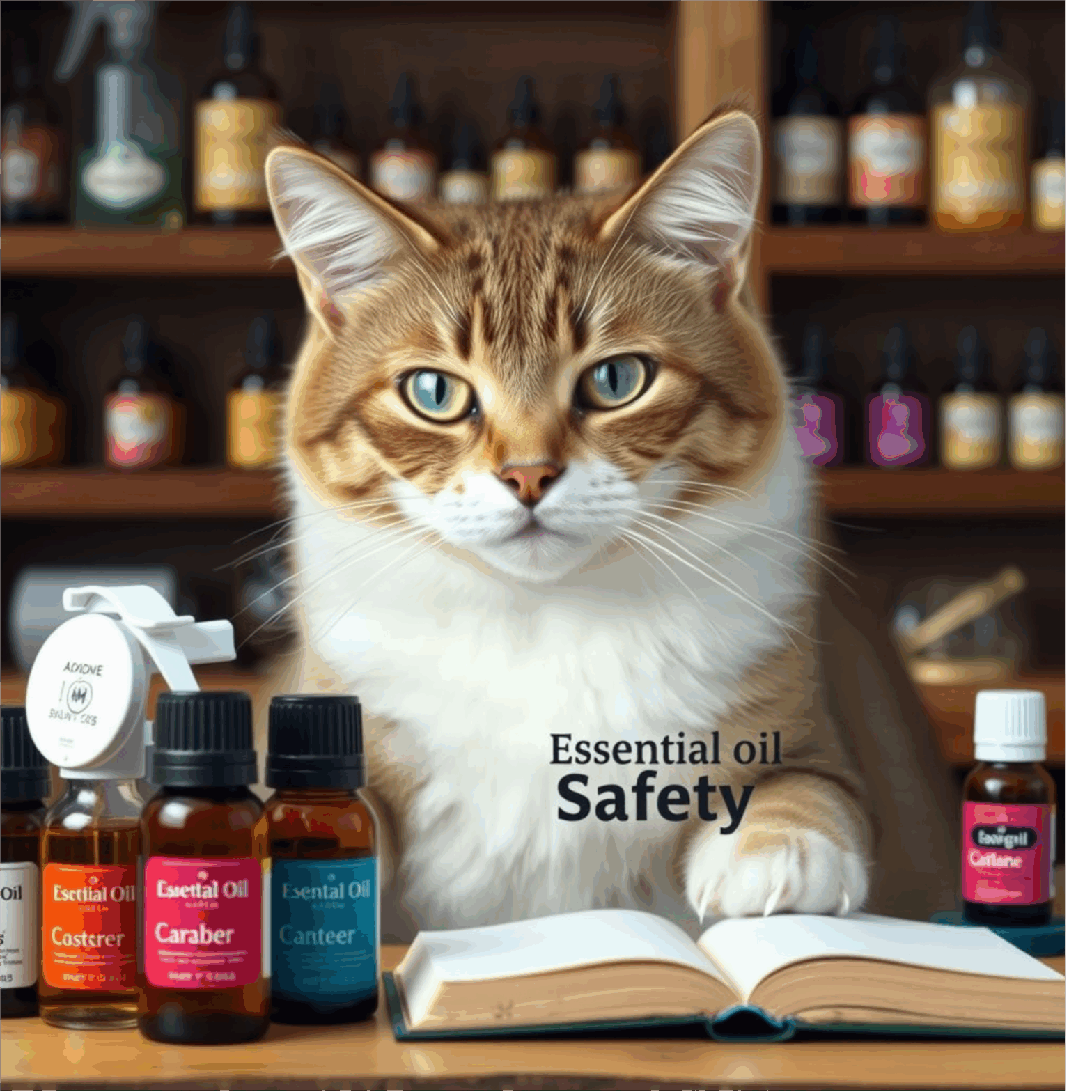Thomas the Twin’s Guide to Essential Oil Safety: Wise Practices for Daily Wellness

Greetings. I am Thomas the Twin, guardian of order and protector of common sense in a world that often forgets it. I wandered into this clowder during uncertain times, and I’ve stayed to make sure things are done properly. That includes the use of essential oils—powerful tools when used with wisdom and care, but dangerous when treated casually.
This guide isn’t meant to frighten you, but to help you use essential oils safely, especially around those most vulnerable. Let’s proceed with facts and clarity.
Essential Oils Are Potent, Not Playthings
Essential oils are highly concentrated plant extracts. One drop may contain the essence of an entire plant, and while that makes them powerful, it also means they can cause harm if misused. They are not regulated as drugs and should never replace medical care (U.S. Food & Drug Administration [FDA], 2020). Used correctly, they can support wellness. Used recklessly, they can cause injury.
Ingestion Requires Professional Guidance
Ingesting essential oils is a serious matter. Despite popular claims, it is not safe to add essential oils to water or tea without the supervision of a licensed medical provider or clinical aromatherapist. Even essential oils on the FDA’s GRAS list (Generally Recognized as Safe) can cause gastrointestinal irritation, allergic reactions, liver damage, or interact with medications if misused (Tisserand & Young, 2014).
Unless you are under professional care, keep essential oils out of your mouth.
Special Caution for Children, Elderly, and Pregnant or Nursing Mothers
Certain populations require additional caution. For infants and children, the skin is more permeable, and respiratory systems are more delicate. Oils like peppermint, eucalyptus, and rosemary can trigger breathing issues in young children and should be avoided entirely for those under two (Tisserand & Young, 2014).
Pregnant individuals must avoid oils that can affect hormones or stimulate contractions. Nursing mothers should consult with a trained provider before topical use or inhalation. The elderly often have thinner skin and may be on medications that interact with oils. Lower dilutions and gentler oils are key for these populations (Price & Price, 2012).
Pets Are at Risk, Especially Cats
This one is personal. I am a cat. And I must be clear: essential oils are toxic to cats. Cats lack the liver enzyme (glucuronyl transferase) required to safely process many compounds in essential oils. Diffusing oils, applying them topically, or using oil-based cleaners can lead to liver damage, respiratory distress, or worse (Reisfield & Reusch, 2020).
Dogs and other animals may tolerate some oils, but this must be approached only under the care of a veterinarian trained in animal aromatherapy. Do not assume safety based on species or size. Always prioritize veterinary consultation.
Recognizing Adverse Reactions
Even with correct use, some individuals may be sensitive or allergic to certain essential oils. Common adverse reactions include:
- Skin irritation (redness, rash, or burning)
- Headache or dizziness
- Nausea or upset stomach
- Respiratory discomfort
If you experience any of these symptoms, stop using the oil immediately and consult a healthcare provider. Always perform a patch test when trying a new oil, especially on sensitive skin.
Safe Storage and Usage
Essential oils must be stored properly. Exposure to air, heat, or sunlight degrades their quality. Store them in dark-colored glass bottles—typically amber or cobalt blue—to protect them from oxidation (Battaglia, 2003). The built-in drop reducer is not just a convenience; it protects against spills, overuse, and contamination. Keep bottles tightly sealed and out of reach of children and animals.
Practical Everyday Uses
When used safely, essential oils can add beauty and calm to everyday life. Try these simple, supportive uses:
- Diffuse lavender before bedtime to promote relaxation
- Use diluted peppermint oil on the temples for tension relief
- Add citrus oils to vinegar for a fresh, natural cleaning spray (away from pets)
- Massage diluted frankincense oil into tired feet after a long day
These small rituals can enhance well-being—but they must be performed with care, especially around vulnerable groups.
Why Latin Names Matter
You might see “lavender” on a label, but which one? Lavandula angustifolia is calming and gentle. Lavandula stoechas can be neurotoxic. Latin binomial names are essential for knowing what plant species you’re working with, especially when safety profiles vary so widely (Worwood, 2016). A reputable supplier will always include the full botanical name.
Choose Reputable Suppliers
Not all essential oils are created equal. Choose suppliers who list the full Latin name, distillation method, and country of origin. Transparency, third-party testing, and batch-specific GC/MS reports are all signs of quality and integrity. Avoid oils labeled vaguely or sold without safety guidance.
A Supportive Tool, Not a Replacement for Medicine
Essential oils can enhance daily life. A calming blend in the diffuser, a foot massage with diluted oil, or a gentle cleaning spray can bring comfort and joy. But they do not replace antibiotics, blood pressure medication, or necessary diagnostics. Use them as part of a well-rounded wellness routine—not a substitute for medical care.
Final Word from Thomas
I came here during uncertain times, and I stayed to help keep the household in balance. Essential oils, like rules, are meant to be respected. Their beauty lies in their strength—but strength without wisdom is risk. Use oils properly, label them clearly, and always seek qualified guidance when using them around those who are small, elderly, pregnant—or furry.
Now go check your labels, tighten your caps, and please—do not diffuse anything near the cat.
With all due order,
Thomas the Twin
Clowder Safety Officer & Aromatic Oversight Coordinator
References
Battaglia, S. (2003). The complete guide to aromatherapy (2nd ed.). The International Centre of Holistic Aromatherapy.
Price, S., & Price, L. (2012). Aromatherapy for health professionals (4th ed.). Churchill Livingstone.
Reisfield, G. M., & Reusch, R. T. (2020). Toxicity of essential oils in cats. Veterinary Clinics: Small Animal Practice, 50(5), 1145–1157. https://doi.org/10.1016/j.cvsm.2020.06.008
Tisserand, R., & Young, R. (2014). Essential oil safety: A guide for health care professionals (2nd ed.). Elsevier Health Sciences.
U.S. Food & Drug Administration. (2020). FDA’s role in regulating essential oils.
Worwood, V. A. (2016). The complete book of essential oils and aromatherapy (25th Anniversary ed.). New World Library.

